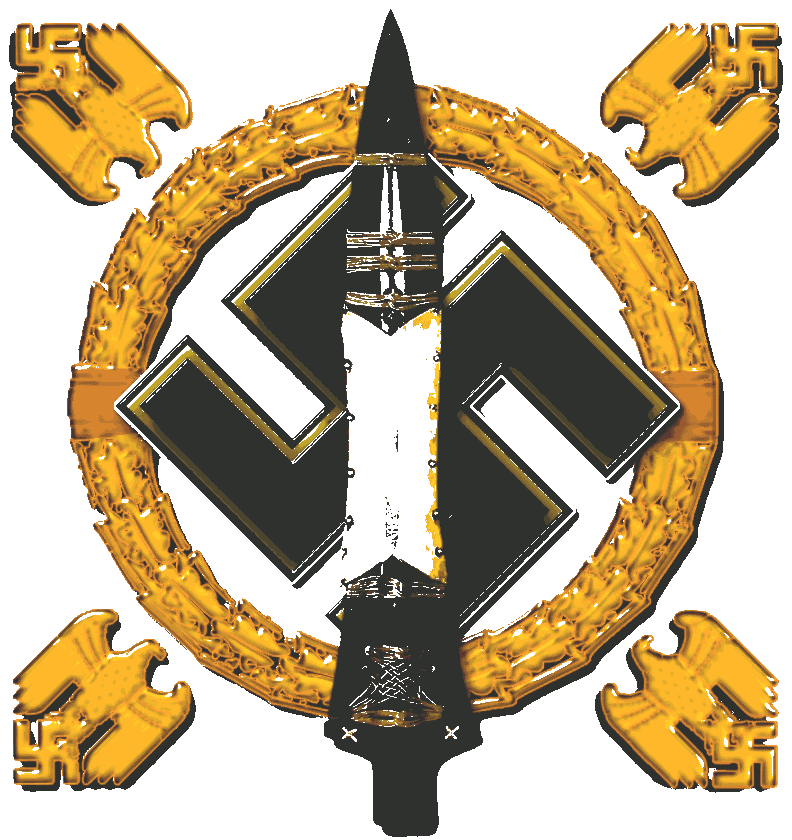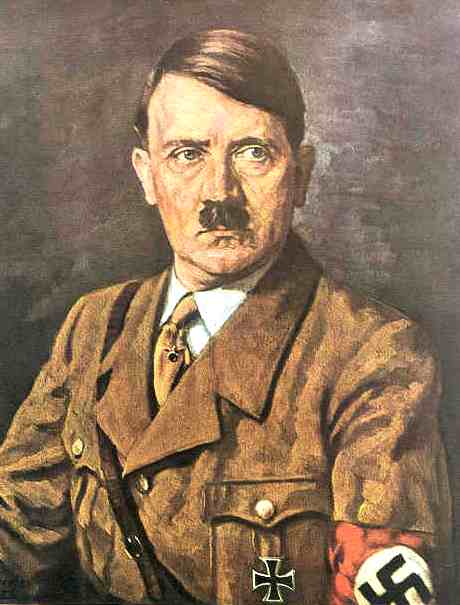
Der
Fuhrer, Adolf
Hitler, started WWII
JU
52
The Junkers Ju 52/3m (nicknamed Tante Ju ("Aunt Ju") and Iron Annie) is a transport aircraft that was designed and manufactured by German aviation company Junkers. First introduced during 1930 as a civilian airliner, it was adapted into a military transport aircraft by Germany's Nazi regime, who exercised power over the company for its war efforts, over the objections of the company's founder Hugo Junkers.
Development of the Ju 52 commenced in the late 1920s, headed by German aeronautical engineer Ernst Zindel. The aircraft's design incorporated a corrugated duralumin metal skin as a strengthening measure, which was a material design pioneered by Junkers and used on many of their aircraft, including the popular Junkers F 13 1920s, the record-setting Junkers W 33, and Junkers W34. The corrugation was a strength and weakness; it created strength but also higher aerodynamic drag; more importantly it allowed the practical use of aluminum before newer alloys were developed.
The Ju 52's maiden flight was performed on 13 October 1930. It was initially designed with a single engine and trimotor; the single engine version was to be the freighter while the trimotor was the passenger airline. In the long run, the trimotor configuration was produced in far greatest numbers. The primary early production model, the Ju 52/3m, was principally operated as a 17-seat airliner or utility transport aircraft by various civil operators during the 1930s. Starting in 1933, the Nazi regime that had taken power in Germany demanded Junkers produce military versions of the Ju 52. Over Hugo Junkers' resistance, the company was compelled to produce military aircraft; in 1935, Nazi officials came to Hugo Junker's house on his birthday, resulting in his death under unclear circumstances and his company having been signed over to the state. Thousands of Ju 52s were procured as a staple military transport of the Luftwaffe. The Ju 52/3mg7e was the principal production model.
The Ju 52 was in production between 1931 and 1952. In a civilian role, it flew with over 12 airlines, including Swissair and Deutsche Luft Hansa, as both a passenger carrier and a freight hauler. In a military role, large numbers flew with the Luftwaffe, being deployed on virtually all fronts of the Second World War as a troop and cargo transport; it was also briefly used as a medium bomber. Additionally, the type was deployed by other nations' militaries in conflicts such as the Spanish Civil War, the Chaco War, the First Indochina War, and the Portuguese Colonial War. During the postwar era, the Ju 52 had a lengthy service life with numerous military and civilian operators; large numbers were still in use by the 1980s. Even in the 21st century, several aircraft have remained operational, typically used for heritage aviation displays and aerial sightseeing.

DEVELOPMENT
The Ju 52 was designed starting in 1925, in two versions, a single engine version for freight transport (Ju-52/1m) and trimotor passenger version for 17 (Ju 52/3m), both as civilian versions. Both designs were overseen by the German aeronautical engineer Earnst Zindel, the design team being based at the Junkers works at Dessau. A driving force in the project was the commercial prospects presented by the German airline Deutsch Lufthansa. Work on turning the design into a prototype started in 1928. The Ju 52 had numerous similarities to several previous Junkers aircraft, such as the previous Junkers W 33, noted for its crossing of the Atlantic in 1928, and the smaller Junkers W 34. Sharing features included the distinctive corrugated
duraluminum exterior. According to aviation author J. Richard Smith, the Ju 52 directly drew upon the company's First World War-era Junkers J 1 - the world's first all-metal aeroplane.
On 13 October 1930, the first prototype, designated Ju 52ba, performed the type's maiden flight; it was initially powered by a single Junkers-built liquid-cooled V-12 engine, capable of generating up to 590 kW (800 PS). During the aircraft's extensive trials, it was reengined with a 555 kW (755 PS) BMW IV water-cooled inline-6 powerplant. The second prototype, designated Ju 52de, featured an increased wing span and was powered by the
BMW IV engine at first; it was soon reengined with the 560 kW (750 hp) 14-cylinder twin-row air-cooled radial Armstrong Siddeley Leopard and re-designated Ju 52di. Later on, the Ju 52di was again reengined with the 550 kW (750 PS) Junkers Jumo 204 air-cooled inverted inline-6, after which it was re-designated Ju 52do. The third prototype, designated Ju 52ce, had a strengthened structure, a modified leading edge, and was fitted with both a wheeled and float undercarriages.
During May 1931, one of the prototypes, designated Ju 52cai, was written off after a crash. While these initial aircraft had been powered by a single engine, Junkers decided to develop the Ju 52 into a trimotor configuration. Accordingly, the Ju 52/3m (drei
motoren - "three engines") was developed, being powered by an arrangement of three radial engines. According to Smith, the earliest known Ju 52/3m was delivered to Bolivian airline Lloyd Aéreo Boliviano during 1932. During its initial production years, airlines were the type's most common customers. By the mid-1930s, the Ju 52/3mce and Ju 52/3fe, were the two primary production variants, both being powered by the BMW 132 radial engine.
MILITARY VERSIONS
Shortly after the Nazis came into power in 1933, Junkers was approached to participate in Germany's rearmament. When Junkers declined, the Nazis responded by demanding ownership of all patents and market shares from his remaining companies, under threat of imprisonment on the grounds of High Treason. Despite Hugo Junkers' objections, his company, designs, and name would be pressed into military service to serve the militaristic regime that had gained power in Germany. Ironically, despite his designs being associated with Germany's Luftwaffe and the
Second World War, Hugo Junkers had opposed Nazism.
During 1934, work commenced on a militarised model of the Ju 52/3m, designated Ju 52/3mg3e, on behalf of the then-secret Luftwaffe. This model could function as a medium bomber, being furnished with a pair of machine gun positions (an open dorsal position and a ventral "dustbin" position lowered by a hand crank), each with single machine guns and operated by a crew of four. Between 1934 and 1935, a total of 450 Ju 52/3mg3e aircraft were delivered to the Luftwaffe.
DESIGN
The Ju 52 had a low cantilever wing, the midsection of which was built into the fuselage, forming its underside. It was formed around four pairs of circular cross-section duralumin spars with a corrugated surface that provided torsional stiffening. A narrow control surface, with its outer section functioning as the aileron, and the inner section functioning as a flap, ran along the whole trailing edge of each wing panel, well separated from it. The inner flap section lowered the stalling speed and the arrangement became known as the Doppelflügel, or "double wing". The outer sections of this operated differentially as ailerons, projecting slightly beyond the wingtips with control horns. The strutted horizontal stabilizer carried horn-balanced elevators which again projected and showed a significant gap between them and the stabilizer, which was adjustable in-flight. All stabilizer surfaces were corrugated.
The Ju 52 featured an unusual corrugated duralumin metal skin, which had been pioneered by Junkers during the
First World
War; the corrugation served to strengthen the whole structure over a smoother approach. The fuselage was of rectangular section with a domed decking, comprising a tubular steel structure that was entirely covered by the corrugated metal skin. A port-side passenger door was placed just aft of the wings; this entrance also acted as a loading hatch for freight, the lower half functioning as a platform to ease cargo movements. The cabin had a dimensional capacity of 17 m3 (590 cu ft), and was lined with numerous windows stretching forward to the pilots' cockpit. The main undercarriage was fixed and divided; some aircraft had wheel fairings, others did not. A fixed tailskid, or a later tailwheel, was used. Some aircraft were fitted with floats or skis instead of the main wheels.
In its original configuration, designated the Ju 52/1m, the Ju 52 was a single-engined aircraft, powered by either a BMW IV or Junkers liquid-cooled V-12 engine. However, the single-engined model was deemed to have been underpowered and, after seven prototypes had been completed, all subsequent Ju 52s were built with three radial engines as the Ju 52/3m (drei motoren
- "three engines"). Originally powered by three Pratt & Whitney R-1690 Hornet radial engines, later production models mainly received 574 kW (770 hp) BMW 132 engines, a licence-built refinement of the Pratt & Whitney design. Export models were also built with 447 kW (600 hp) Pratt & Whitney R-1340 Wasp and 578 kW (775 hp) Bristol Pegasus VI engines.
The two wing-mounted radial engines of the Ju 52/3m had half-chord cowlings and in planform view (from above/below) appeared to be splayed outwards, being mounted at an almost perpendicular angle to the tapered wing's sweptback leading edge (in a similar fashion to the Mitsubishi G3M bomber and Short Sunderland; the angled engines on the Ju 52 were intended to make maintaining straight flight easier should an engine fail, while the others had different reasons). The three engines had either Townend ring or NACA cowlings to reduce drag from the engine cylinders, although a mixture of the two was most common (as can be seen in many of the accompanying photographs), with deeper-chord NACA cowlings on the wing engines and a narrow Townend ring on the center engine (onto which a deeper NACA cowl was more difficult to fit, due to the widening fuselage behind the engine). Production Ju 52/3m aircraft flown by Deutsche Luft Hansa before the
Second World War, as well as Luftwaffe-flown Ju 52s flown during the war, usually used an air-start system to turn over their trio of radial engines, using a common compressed air supply that also operated the main wheels' brakes.
In a military context, the Ju 52 could carry up to 18 fully-equipped soldiers, or 12 stretchers when used as an air ambulance. Transported material was loaded and unloaded through side doors by means of a ramp. Air-dropped supplies were jettisoned through two double chutes; supply containers were dropped by parachute through the bomb-bay doors, and paratroopers jumped through the side doors. Sd.Kfz. 2 Kettenkrafträder (half-track motorcycles) and supply canisters for parachute troops were secured under the fuselage at the bomb bay exits and were dropped with four parachutes. A tow coupling was built into the tail-skid for use in towing freight gliders. The Ju 52 could tow up to two DFS 230 gliders.

SECOND WORLD WAR
During its service with Luft Hansa, the Ju 52 had proved to be an extremely reliable passenger airplane. This positive experience contributed to its adoption by the Luftwaffe as a standard aircraft model. In 1938, the 7th Air Division had five air transport groups with 250 Ju 52s. The Luftwaffe had 552 Ju 52s at the start of the Second World War. Though it was built in great numbers, the Ju 52 was technically obsolete. Between 1939 and 1944, 2,804 Ju 52s were delivered to the Luftwaffe (1939: 145; 1940: 388; 1941: 502; 1942: 503; 1943: 887; and 1944: 379). The production of Ju 52s continued until around the summer of 1944; when the war came to an end, 100 to 200 were still available.
Lightly armed, and with a top speed of only 265 km/h (165 mph) — half that of a contemporary Hurricane — the Ju 52 was very vulnerable to fighter attack, and an escort was always necessary when flying in a combat zone. Many Ju 52's were shot down by antiaircraft guns and fighters while transporting supplies, most notably during the desperate attempt to resupply the trapped German Sixth Army during the final stages of the Battle of Stalingrad in the winter of 1942–1943.
From 24 November 1942 to 31 January 1943, 488 aircraft were recorded as lost (this number included 266 Ju 52, 165 He 111, 42 Ju 86, 9 Fw 200, 5 He 177 and 1 Ju 290) and about 1,000 flight personnel.
DENMARK AND NORWEGIAN CAMPAIGNS
The first major operation for the aircraft after the bombing of Warsaw was in Operation Weserübung, the attack on Denmark and Norway on 9 April 1940. Fifty-two Ju 52s from 1. and 8. Staffel in Kampfgeschwader 1 transported a company of Fallschirmjäger (paratroopers) and a battalion of infantry to the northern part of Jutland, and captured the airfield at Aalborg, vital to support the operation in southern Norway. Several hundred Ju 52s were also used to transport troops to Norway in the first days of this campaign.
During the Norwegian campaign, the Luftwaffe's Ju 52s performed a total of 3,018 sorties, 1830 of which had been carrying troops while the remainder transported cargo and various supplies. According to Smith, 29,280 personnel, 2,376 tons of supplies and 259,300 imp. gallons of fuel had been airlifted by Ju 52s through the campaign. Around 150 aircraft had been recorded as lost by the end of operations.
The seaplane version, equipped with two large floats, served during the Norwegian campaign in 1940, and later in the
Mediterranean theatre. Some Ju 52's, both floatplanes and landplanes, were also used as minesweepers, known as Minensuch — literally, "mine-search" aircraft in German — and fitted with a 14 m (46 ft) diameter current-carrying degaussing ring under the airframe to create a magnetic field that triggered submerged naval mines. These aircraft were usually given an -"MS" suffix to designate them, as had been done with the similarly equipped Bv 138 MS trimotor flying boat.
NETHERLANDS CAMPAIGN
The Ju 52 transport aircraft participated in the attack on the Netherlands on 10 May 1940. It was during this campaign that the Ju 52 performed a crucial role in carrying out the first large-scale air attack with paratroops in history during the Battle for The Hague. According to Smith, 500 Ju 52s had been made ready for the aerial assault on the Low Countries. In addition to the paratroop drops, they also directly landed in hostile territory to deploy assault troops, such as at Ypenburg Airport, on public highways around The Hague, and on the River Meuse (the latter using float-equipped aircraft).
During the opening days of the Netherlands campaign, many German aircraft were shot down by Dutch AA-fire; a total of 125 Ju 52s were lost and 47 damaged; author Hooton considered these losses to have been relatively costly for the
Luftwaffe. Although transport operations with the Ju 52 were noticeably curtailed after the initial days of the invasion, the type continued to aerially supply forward ground troops.
During August 1940, Nazi German decided to base large numbers of Ju 52s at airfields in the Lyon, Lille, and Arras areas. Luftwaffe transport units were deliberately held at a state of readiness for Operation Sea Lion, the envisioned invasion of the British Isles; however, this operation was never attempted, in part due to the Luftwaffe being unable to secure aerial supremacy during the Battle of Britain.
BALKANS CAMPAIGN
The next major use of the Ju 52 was in the Balkans campaign. The type has been credited with enabling the rapid deployment of German ground forces throughout the theatre. The Ju 52 was also deployed during the Battle of Crete in late May 1941. 493 Ju 52/3m aircraft were used to transport most of the 22,750 troops flown onto Crete for the Luftwaffe's largest airborne invasion of the war. While victorious, 170 aircraft were lost along with 4,500 personnel; the high loss rate brought about the end of German paratrooper operations.
NORTH AFRICA CAMPAIGN
During the North African campaign, the Ju 52 was the mainstay reinforcement and resupply transport for the Germans, starting with 20 to 50 flights a day to Tunisia from Sicily in November 1942, building to 150 landings a day in early April as the Axis situation became more desperate. The Allied air forces developed a counter-air operation over a two-month period and implemented Operation Flax on 5 April 1943, destroying 11 Ju 52s in the air near Cap Bon and many more during bombing attacks on its Sicilian airfields, leaving only 29 flyable. That began two catastrophic weeks in which more than 140 aircraft were lost in air interceptions, culminating on 18 April with the "Palm Sunday Massacre" in which 24 Ju 52s were shot down, and another 35 staggered back to Sicily and crash-landed.
HITLER'S PERSONAL TRANSPORT
Hitler used a Deutsche Luft Hansa Ju 52 for campaigning in the 1932 German election, preferring flying to train travel. After he became Chancellor of Germany in 1933, Hans Baur became his personal pilot, and Hitler was provided with a personal Ju 52. Named Immelmann II after the
First World War ace Max Immelmann, it carried the registration D-2600. As his power and importance grew, Hitler's personal air force grew to nearly 50 aircraft, based at Berlin Tempelhof Airport and made up mainly of Ju 52s, which also flew other members of his cabinet and war staff. In September 1939, at Baur's suggestion, Immelmann II was replaced by a four-engine Focke-Wulf Fw 200 Condor, although Immelman II remained his backup aircraft for the rest of the Second World War.

SECOND
WORLD WAR
The
Second World War has been chronicled, mythologized, and revered in
film, television, and other media for generations. But zooming in on individual stories, lives, and battles
for entertainment, can sometimes obscure the utterly overwhelming nature of the
war.
An astounding 60 million people around the world are estimated to have lost their lives in the conflict. The total number of casualties counts 15 million soldiers and 45 million civilians. This may be a low estimate, as estimates place the number of dead in the conflict at 50 million in China alone.
It is widely accepted that Germany started World War II in its effort to conquer Europe, invading France in the west and Poland and the Soviet Union in the east. Led by
Adolf Hitler’s murderous
Nazi regime, the Germans welcomed Italy and Japan into the Axis fold to fight the Allies, whose major members grew from just the United Kingdom and France at the war’s outset to include the United States and the Soviet Union.
While the Germans quickly overran France and installed a collaborationist government, a major French resistance sprung up and actively worked to undermine the Nazis in France and abroad, providing intelligence to the Allies as spies sabotaged German supply and communication lines within France.
No accounting of World War II would be complete without inclusion of the Nazis' brutal concentration camps, where Hitler turned his genocidal fantasies of creating a so-called German “master race” by killing millions of Jews, gypsies, and other persecuted groups into a reality.
By the time the second world war came to a close in 1945, the victorious powers committed to a new world organization that aimed to ensure there would never be a third. The
United Nations was born from this commitment, along with the popularization of the idea that crimes against humanity and
genocide must never be tolerated.
But this has not stopped Russia invading the Ukraine in 2022, in the process committing serious HR violations and (alleged) civilian massacres.
Once again, Europe is being drawn into a world conflict situation, with
President Vladimir Putin threatening Finland and Norway with nuclear weapons.
Potentially, leaving China and India, as accelerating world powers to reap
the spoils as the US scrambles to underpin a paper money based economy with
promises.
Russian
imperialism on this scale was only possible due to lax laws in other
countries, allowing property and other investments, without vetting where
the money was coming from. In addition, purchasing oil and gas for energy,
built up the financial reserves in Russia, to enable them to launch their
aggressive attacks on Ukrainian civilians - once again putting the world on
red-alert for a Third World
War reversing the build up to a New
World Order.
This
situation has come about due to the lack of action on renewable energy to
rid the world of fossil
fuels. Indeed, fossil fuels have been subsidized, rather than renewable
energy, such as solar, wind and wave. These are policies that are far
removed from the concept of sustainability, as per the UN's Sustainability
Development Goals.
GOOD
THINGS FROM WWII - TEN OF THE BEST
Every
cloud has a silver lining. Even the Second World War, because wars tend to
speed up technological advancement. Even some unusual inventions like the
bouncing bomb from Barnes Wallace, got the go ahead.
Today,
politicians and policies are at a virtual standstill, where investments
might be affected by disruptive technology. Even though we need such
advances quite urgently.
1. COMPUTERS
From the machine that we used to write this article, to the incredible processing power of an
ordinary smart phone, modern computing would not be what it is without the innovation of the Government Code and Cipher School at
Bletchley Park and
Colossus. This giant installation used glass valves, because transistors would not be invented until NASA wanted a computer light enough to go to the Moon.
Originally invented as a way to speed up the cracking of the German Enigma codes, Colossus was the first of many computers which have gradually shrunk in size to become part of everyday life, with their use in work, schools and play around the world.

2. PENICILLIN
Howard Florey was the Australian scientist who spearheaded the studies for medical penicillin.
While he was known as quite an impersonal man, who disliked using first names, he was also highly admired by the scientific community and never had a lack of willing assistants, on which he stated:
"I would work with the devil himself-if he were good
enough".
In 1938, Florey started working with a small group of scientists, including Ernst Boris Chain, with whom he would later go on to share the Nobel Prize for Medicine, and Sir Alexander Fleming. By 1941, they had developed a drug sophisticated enough for human trials, which proved a resounding success.
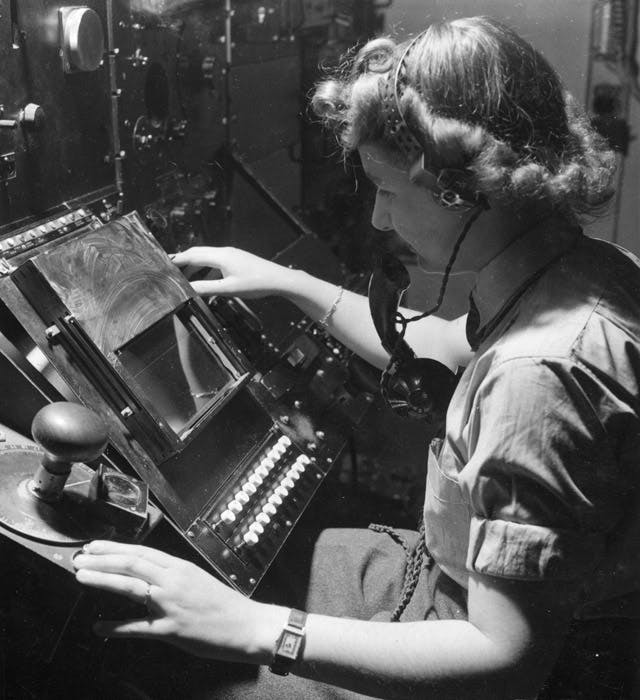
3. RADAR
Perfected by the British during the Battle of Britain to detect incoming air raids, radar is still used in everyday life.
Speed cameras work on radar technology, measuring your speed and automatically taking a photograph if you are over the permitted limit.
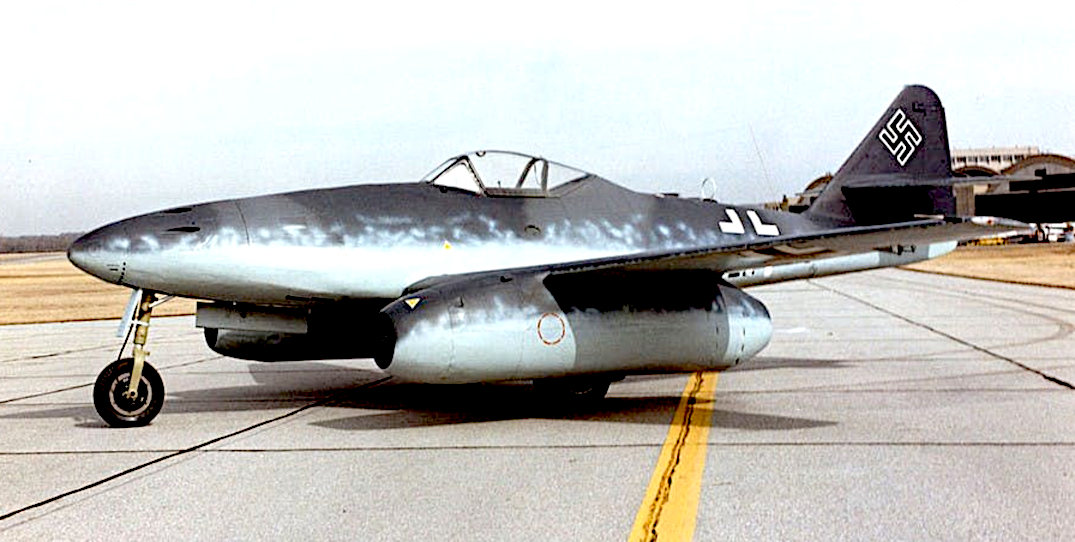
4. JET ENGINES - GAS TURBINES
Jet engines came to the fore in the closing months of World War 2 as a way of giving fighters an advantage over their adversaries. The German ME 262 was the first operational Jet fighter with the British Gloucester Meteor not far behind.
The jet engine was invented by Frank
Whittle.
This technology, first developed between 1939 and 1945, is now being used by airlines to carry passengers all over the globe, so much so that flying abroad is now more affordable than ever. Sadly, jets are partly responsible for
global warming and
atmospheric pollution.
5. PHOTOCOPYING - XEROGRAPHY
The idea that a great invention was the only thing between his modest upbringing and success was an idea that gripped Chester "Chet" Carlson from childhood, most of which he spent buried in books about
Thomas Edison and other famous inventors.
Having worked in patent offices for several years, Carlson noticed that there was always a lack of patent specifications, copies of which had to be typed up and then individually proofread. Little did he know this observation would lead to the application of his first patent in 1937 when countless hours of kitchen experiments led to the discovery of xerography, the science still used in photocopiers today.
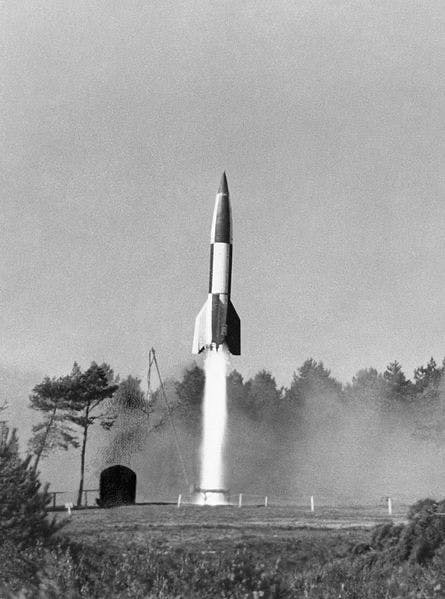
6. ROCKETS FOR SATELLITES
Using German technology geared towards guiding the V2 rocket, the Americans and Russians were able to launch the first satellites, put men on the moon and build the International
Space
Station.
All of these post-war initiatives advanced our knowledge of the universe significantly. In a more everyday sense, signals bounce from satellites in space to bring you digital TV and SatNavs triangulate your position between three satellites to tell you where you are in the world.

7. BALL POINT PEN - LASZLO BIRO
Frustrated by the fountain pen's tendency to smudge, journalist and artist Laszlo Biro invented the ballpoint pen after seeing a type of ink in a printing shop that dried almost as soon as it hit the page. He enlisted the help of his brother George, a scientist, and took out a patent on the invention in 1938.
One of the ballpoint's first customers was the Royal Air Force, taking out an order of 30,000 units for pilots to use at high altitudes, where reservoir pens were prone to leakage.

8. FREEZE DRIED COFFEE
In today's caffeinated world it might be hard to imagine a huge surplus of coffee beans sitting unused in warehouses in
Brazil. Yet, it was exactly this problem, brought about by the Great Depression, which lead to suppliers asking Nestle to come up with a way of preserving it.
Soluble coffee products had been on the market before but they were vastly inferior in taste to the product created by Nestle in 1938. The brand pioneered the process of drying coffee extract with carbohydrates. Freeze-dried coffee would come about after the war, using the same vacuum technology used to produce penicillin.
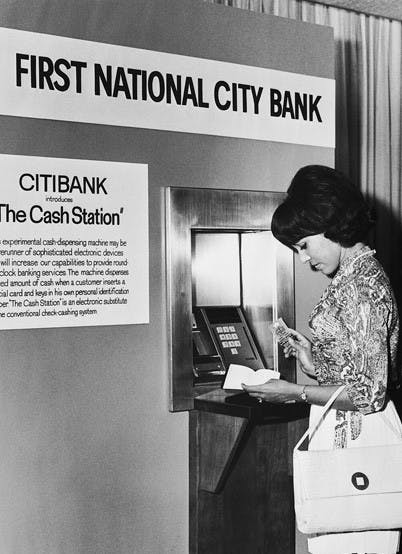
9. ATM AUTOMATED BANKING MACHINES
Inventor Luther Simjian emigrated to America from Armenia when he was 16. He went on to hold over 200 different patents for inventions ranging from flying simulators to computerised indoor golf ranges. In 1939, Simjian started work on the world's first working ATM, but it wasn't until the 1960s that he managed to convince a
New York City bank to install several machines in one of their branches.
They were removed after six months due to customer's distrust of a money-swallowing computer, as Simjian later divulged:
"It seems the only people using the machines were people like prostitutes and gamblers who didn't want to deal with
bank tellers face-to-face". Even today, people would rather pay money into a
bank, via a person, who gives out a paper receipt. Withdrawing cash is
another matter. ATMs are indispensable for that, and checking bank balances.

10. SUPERGLUE
Superglue was accidentally invented by a scientist looking to manufacture gun sights. While he was working for Kodak, Dr Harry Coover, discovered that a chemical mixture he had used bonded extremely strongly, so much so that once stuck together, it was difficult to separate.
He initially abandoned the mixture as it wasn't what he needed for the project he was working on. Superglue only resurfaced on the civilian market in 1958, a full 16 years after its initial invention.
A
- Z OF NAZI GERMANY
|











